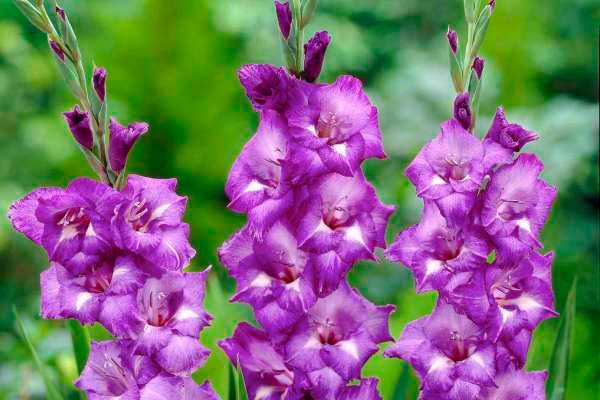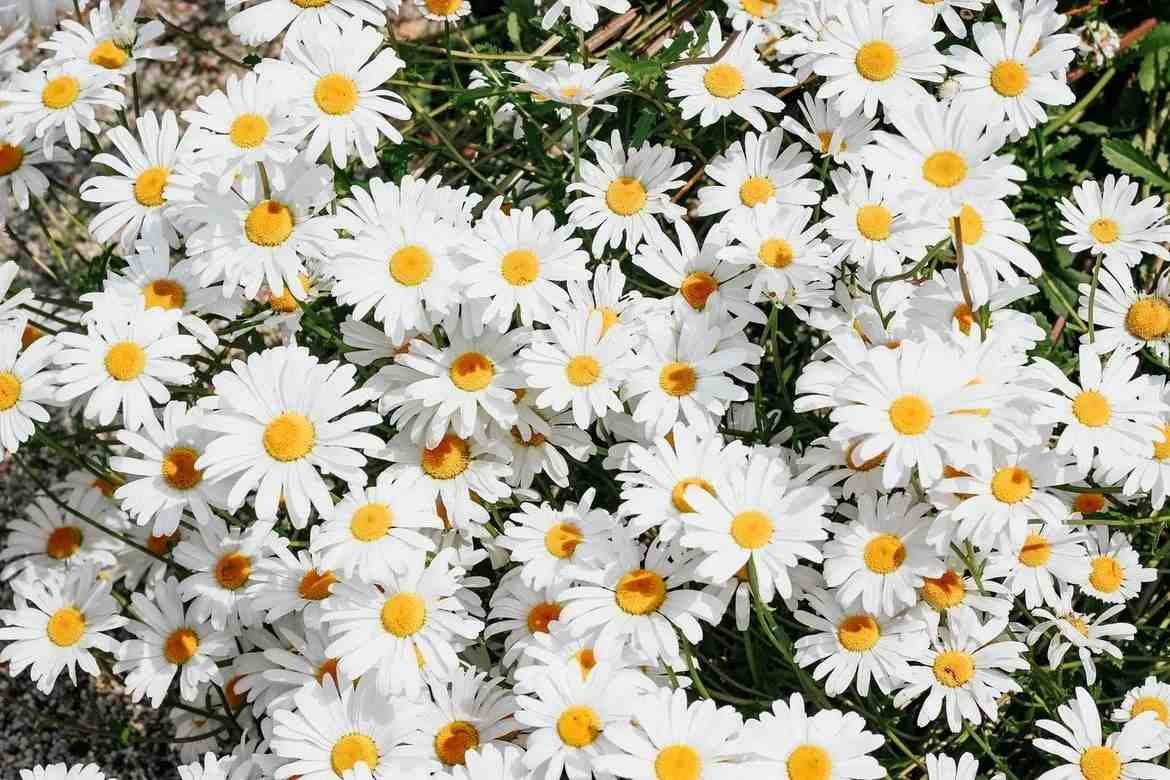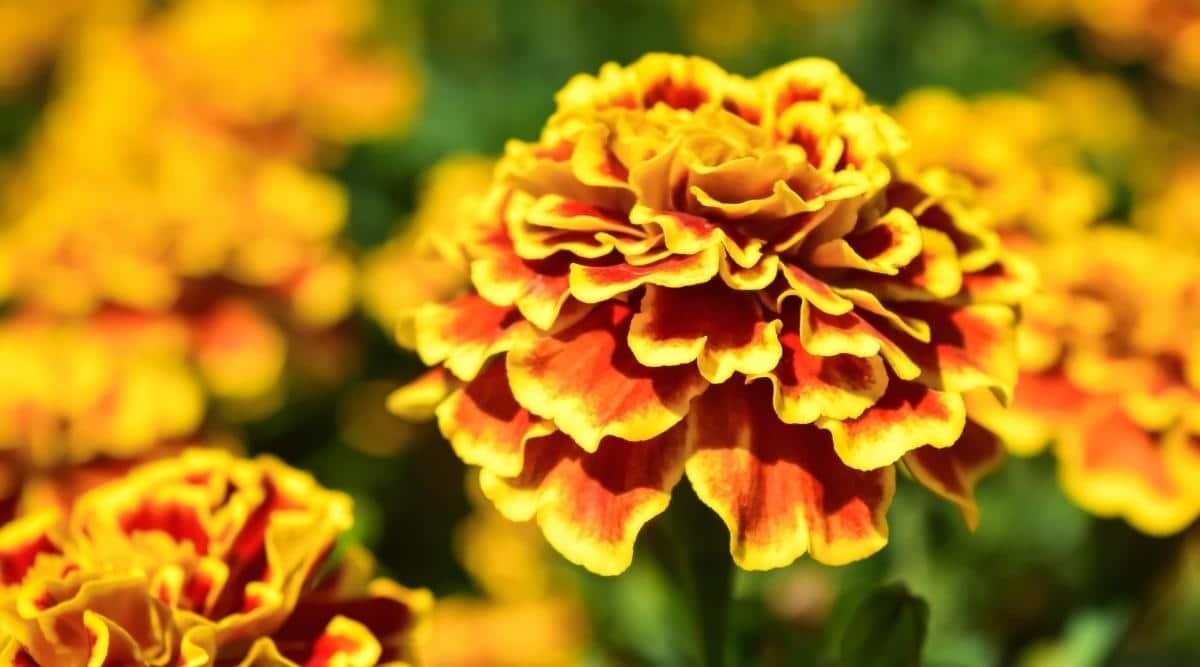Gladiolus Flower Facts, Uses, Cultivation, Botany, Historical Significance
 Gladiolus Flower Facts
Gladiolus Flower FactsGladiolus Flower Facts | Description | Distribution and Habitat | Botany and evolution | Cultivation | Uses | Cultural | Interesting facts | frequently asked questions about Gladiolus
Welcome to the fascinating world of the Flower Gladiolus! With its striking tall stem and vibrant blooms, this flower is sure to capture your heart and leave you mesmerized. Known for its elegant and dramatic appearance, the Gladiolus is a popular choice for both gardeners and florists alike. With a wide range of colors and sizes, these beautiful flowers are perfect for adding a touch of sophistication and beauty to any setting. So whether you’re looking to brighten up your garden or create a stunning floral arrangement, the Gladiolus is sure to impress. Join us as we explore the captivating beauty and charm of this amazing flower!
Taxonomy of Gladiolus
| Kingdom | Plantae |
|---|---|
| Division | Magnoliophyta |
| Class | Liliopsida |
| Order | Asparagales |
| Family | Iridaceae |
| Genus | Gladiolus |
| Species | Gladiolus ×hortulanus |
Morphology of Gladiolus
| Feature | Description |
|---|---|
| Stem | Tall, upright, and cylindrical, can grow up to 4 feet (1.2 meters) |
| Leaves | Long, narrow, sword-shaped, and arranged in a fan-like manner |
| Flowers | Large, showy, and funnel-shaped with six petals and a trumpet-shaped center, available in a variety of colors including red, pink, orange, yellow, white, and purple |
| Inflorescence | A spike-like raceme that can bear up to 20 flowers in a single stem |
| Fruit | A capsule containing numerous small, brown, angular seeds |
| Root system | A fibrous root system with corms (underground swollen stems) that store nutrients and enable the plant to survive during dormancy or unfavorable conditions |

Description of Gladiolus
The Gladiolus flower, also known as the sword lily, is a perennial plant that belongs to the Iridaceae family. It is native to South Africa but is now widely cultivated in different parts of the world for its showy and attractive blooms. The plant typically grows up to 4 feet (1.2 meters) tall and has long, narrow, sword-shaped leaves that are arranged in a fan-like manner. The flowers are large, funnel-shaped, and can be found in a wide range of colors, including red, pink, orange, yellow, white, and purple.
The Gladiolus inflorescence is a spike-like raceme that can bear up to 20 flowers in a single stem. Each flower has six petals and a trumpet-shaped center. The flowers bloom from the bottom up, with the bottom flowers opening first and the top flowers opening last. This gives the spike-like raceme a gradual and attractive color gradient.
The Gladiolus fruit is a capsule that contains numerous small, brown, angular seeds. The root system of the Gladiolus plant is fibrous, with corms (underground swollen stems) that store nutrients and enable the plant to survive during dormancy or unfavorable conditions.
In summary, the Gladiolus flower is a stunning and attractive plant that is widely cultivated for its large and colorful blooms. It is characterized by its tall and upright stem, long and narrow sword-shaped leaves, spike-like raceme inflorescence, large funnel-shaped flowers, and fibrous root system with corms.
Distribution and habitat of Gladiolus
The Flower Gladiolus is native to South Africa, but it is now widely cultivated in different parts of the world for ornamental purposes. It has been introduced to many regions, including Europe, Asia, Australia, and the Americas, and is now found growing in gardens, parks, and naturalized areas.
The Gladiolus plant prefers well-drained soil and full sun exposure, although it can tolerate some shade. It can grow in a variety of soil types, including sandy, loamy, or clay soils, as long as they are well-drained. The plant is also able to tolerate a wide range of temperatures, but it does not tolerate frost or extreme heat.
In its native habitat, the Gladiolus plant grows in grasslands, savannas, and scrublands. It is able to survive in areas with low rainfall, thanks to its corms, which allow the plant to store water and nutrients during periods of drought. In cultivation, the Gladiolus plant is often grown in flower beds, borders, or containers, and is also used for cut flowers and floral arrangements.
In summary, the Flower Gladiolus is a widely cultivated plant that is native to South Africa but can now be found growing in many regions around the world. It prefers well-drained soil and full sun exposure, and is able to tolerate a range of temperatures. In its native habitat, it grows in grasslands, savannas, and scrublands, and is able to survive during periods of drought thanks to its corms.
Botany and evolution of Gladiolus
The Flower Gladiolus is a member of the Iridaceae family, which includes around 80 genera and 1,600 species of flowering plants. Within the Iridaceae family, the Gladiolus genus is classified within the subfamily Iridoideae. The Gladiolus genus comprises around 260 species of perennial plants that are native to Africa, Madagascar, and the Mediterranean region.
The Gladiolus plant is characterized by its tall and upright stem, which can grow up to 4 feet (1.2 meters) in height. The leaves are long, narrow, and sword-shaped, and are arranged in a fan-like manner. The flowers are large, funnel-shaped, and come in a wide range of colors, including red, pink, orange, yellow, white, and purple. The inflorescence is a spike-like raceme that can bear up to 20 flowers in a single stem. The fruit is a capsule that contains numerous small, brown, angular seeds.
The evolution of the Gladiolus genus is not well-understood, but it is believed that the genus originated in sub-Saharan Africa and Madagascar. The earliest known fossils of Gladiolus date back to the Pliocene epoch, around 5 million years ago. Over time, the Gladiolus plant has diversified into a wide range of species, many of which have been cultivated for ornamental purposes.
In summary, the Flower Gladiolus is a member of the Iridaceae family and the Gladiolus genus, which comprises around 260 species of perennial plants. The Gladiolus plant is characterized by its tall and upright stem, long and narrow sword-shaped leaves, large funnel-shaped flowers, spike-like raceme inflorescence, and capsule fruit. The evolution of the Gladiolus genus is not well-understood, but it is believed to have originated in sub-Saharan Africa and Madagascar and has diversified over time into a wide range of species.
Cultivation of Gladiolus
The Flower Gladiolus is a popular plant for cultivation due to its beautiful and showy flowers, which come in a wide range of colors. It is relatively easy to grow and can be propagated by seed or by corms. Corms are the underground storage organs of the Gladiolus plant, and they are used for vegetative reproduction.
The Gladiolus plant prefers well-drained soil and full sun exposure, although it can tolerate some shade. It is best to plant Gladiolus corms in the spring, after the danger of frost has passed. The corms should be planted at a depth of around 4 inches (10 cm) and spaced about 6 inches (15 cm) apart. It is important to water the corms regularly, but avoid over-watering as this can cause the corms to rot.
Once the Gladiolus plant begins to grow, it should be staked to prevent it from bending or breaking under the weight of its flowers. It is also important to fertilize the plant regularly with a balanced fertilizer to encourage healthy growth and flowering. Deadheading, or removing the spent flowers, can also help to promote more blooms.
Harvesting Gladiolus flowers is relatively simple. The best time to cut the flowers is when the bottom few buds on the stem have begun to open. The flowers should be cut with a sharp knife or scissors and immediately placed in a container of water. Gladiolus flowers can be used for cut flower arrangements or left to bloom in the garden.
In summary, the Flower Gladiolus is a popular plant for cultivation due to its beautiful and showy flowers. It can be propagated by seed or corms and prefers well-drained soil and full sun exposure. To cultivate the Gladiolus plant, corms should be planted in the spring, staked, and fertilized regularly. Deadheading can also help to promote more blooms. Harvesting Gladiolus flowers is relatively simple and can be used for cut flower arrangements or left to bloom in the garden.
Uses of Gladiolus
The Flower Gladiolus is primarily used for ornamental purposes, as it is known for its beautiful and showy flowers. The wide range of colors and varieties available make it a popular choice for cut flower arrangements and for adding color and interest to gardens and landscapes.
In addition to its ornamental uses, the Gladiolus plant has also been used for medicinal purposes. In traditional medicine, various parts of the plant, including the corms, leaves, and flowers, have been used to treat a range of ailments, such as diarrhea, dysentery, and bronchitis. The plant has also been used topically to treat wounds and skin infections.
In some cultures, the Gladiolus plant has symbolic meanings and is used in rituals and ceremonies. In ancient Rome, the Gladiolus flower was associated with gladiators and was used in victory celebrations. In South Africa, the plant is associated with strength and resilience and is often used in funeral arrangements.
In summary, the Flower Gladiolus is primarily used for ornamental purposes due to its beautiful and showy flowers. It is also used for medicinal purposes in traditional medicine to treat various ailments. In some cultures, the Gladiolus plant has symbolic meanings and is used in rituals and ceremonies.
Cultural and Historical Significance of Gladiolus
The Flower Gladiolus has been cultivated for thousands of years and has played a significant role in various cultures and civilizations throughout history. In ancient Rome, the Gladiolus flower was associated with gladiators and was used in victory celebrations. The name “Gladiolus” comes from the Latin word “gladius,” which means sword, and was given to the plant because of its sword-shaped leaves.
In South Africa, the Gladiolus plant has cultural significance and is often used in traditional medicine and rituals. The plant is associated with strength and resilience and is often used in funeral arrangements as a symbol of hope and courage.
In addition to its cultural significance, the Gladiolus plant has also played a role in scientific research. The plant’s unique genome has been studied to better understand the evolution and development of flowering plants. Gladiolus hybrids have also been developed for use in plant breeding and horticulture.
Today, the Flower Gladiolus continues to be a popular plant for cultivation and is used for ornamental purposes in gardens and landscapes. Its wide range of colors and varieties make it a popular choice for cut flower arrangements, weddings, and other special events.
In summary, the Flower Gladiolus has played a significant role in various cultures and civilizations throughout history. Its association with gladiators in ancient Rome and its cultural significance in South Africa are just a few examples of its importance. In addition, the Gladiolus plant has been studied for its unique genome and is used in plant breeding and horticulture. Today, the Flower Gladiolus continues to be a popular plant for cultivation and is used for ornamental purposes in gardens and special events.
Explanatory Notes for Gladiolus
Here are some plagiarism-free explanatory notes for the Flower Gladiolus:
- Scientific name: The scientific name for the Gladiolus plant is Gladiolus spp. The plant belongs to the family Iridaceae.
- Appearance: The Gladiolus plant is known for its tall, sword-shaped leaves and showy flowers. The flowers are arranged in spikes and come in a wide range of colors, including pink, red, purple, yellow, and white. The plant can reach heights of up to six feet and is a popular choice for cut flower arrangements and gardens.
- Habitat: The Gladiolus plant is native to South Africa, but it is now cultivated in many parts of the world. It prefers well-drained soil and full sun but can tolerate partial shade. The plant is often grown from corms, which are underground storage organs that store nutrients for the plant.
- Cultivation: The Gladiolus plant is relatively easy to grow and can be cultivated in a range of soil types. The plant is typically propagated by dividing the corms or by planting seeds. Gladiolus plants require regular watering and fertilization to produce healthy and vibrant flowers.
- Uses: The Gladiolus plant is primarily used for ornamental purposes, such as cut flower arrangements and landscaping. In addition, various parts of the plant have been used for medicinal purposes in traditional medicine. The plant has also played a role in scientific research due to its unique genome.
In summary, the Flower Gladiolus is a tall and showy plant with sword-shaped leaves and colorful flowers. It is native to South Africa but is now cultivated in many parts of the world. The plant is easy to grow and has ornamental, medicinal, and scientific uses.
Interesting facts about Gladiolus
Here are 10 interesting facts about the Flower Gladiolus:
- The name “Gladiolus” comes from the Latin word “gladius,” which means sword, and was given to the plant because of its sword-shaped leaves.
- The Gladiolus plant is also known as the sword lily.
- There are over 250 species of Gladiolus plants, with numerous varieties and hybrids.
- The Gladiolus flower is the birth flower for the month of August.
- The Gladiolus plant is native to South Africa and was first introduced to Europe in the late 17th century.
- Gladiolus flowers are popular for their long-lasting blooms, making them a popular choice for cut flower arrangements.
- The Gladiolus plant is often associated with strength, courage, and resilience, and is used in traditional medicine and rituals in some cultures.
- In ancient Rome, the Gladiolus flower was associated with gladiators and was used in victory celebrations.
- The Gladiolus plant has a unique genome, making it an important plant for scientific research in genetics and plant breeding.
- Gladiolus flowers come in a wide range of colors, including pink, red, purple, yellow, and white, making them a popular choice for gardens and landscapes.
General queries or frequently asked questions about Gladiolus
1. What is the meaning of the Gladiolus flower?
The Gladiolus flower is often associated with strength, courage, and resilience. It is also associated with remembrance, making it a popular choice for funerals and memorials.
2. What colors do Gladiolus flowers come in?
Gladiolus flowers come in a wide range of colors, including pink, red, purple, yellow, and white. There are also many different varieties and hybrids of Gladiolus plants, each with its unique coloration.
3. Can Gladiolus plants grow in containers?
Yes, Gladiolus plants can grow in containers, provided they have adequate space for their roots to grow and are given enough water and nutrients. However, container-grown Gladiolus plants may be more susceptible to pests and diseases, so proper care is essential.
4. How long do Gladiolus flowers typically bloom?
Gladiolus flowers typically bloom for two to three weeks, depending on the variety and growing conditions. However, some varieties may bloom for a shorter or longer period.
5. How do I care for my Gladiolus plants?
Gladiolus plants require regular watering and fertilization to produce healthy and vibrant flowers. They also prefer well-drained soil and full sun but can tolerate partial shade. Deadheading spent blooms and removing damaged leaves can also help to keep the plant healthy.
6. Are Gladiolus plants toxic to pets?
Yes, Gladiolus plants can be toxic to pets, particularly dogs and cats. The plant contains a chemical called glycoside, which can cause vomiting, diarrhea, and other symptoms if ingested. It is best to keep Gladiolus plants out of reach of pets and to seek veterinary care if ingestion is suspected.
7. Can Gladiolus plants be grown from seeds?
Yes, Gladiolus plants can be grown from seeds, but they may take longer to bloom than plants grown from corms. Seeds should be planted in well-draining soil and kept moist until they germinate. Once the seedlings have grown to a suitable size, they can be transplanted to their final location.
8. Can Gladiolus flowers be used for wedding arrangements?
Yes, Gladiolus flowers are a popular choice for wedding arrangements and bouquets. Their long stems and showy blooms make them ideal for adding height and color to floral arrangements.
9. How tall can Gladiolus plants grow?
Gladiolus plants can grow up to six feet tall, depending on the variety and growing conditions. However, many varieties are shorter and more compact, making them suitable for smaller gardens and containers.
10. Are Gladiolus flowers fragrant?
Some varieties of Gladiolus flowers have a light, sweet fragrance, while others have no scent at all. The fragrance of Gladiolus flowers can also vary depending on the time of day and growing conditions.
Conclusion
In conclusion, the Gladiolus flower is a beautiful and versatile plant with many different varieties, colors, and uses. It is often associated with strength, courage, and remembrance, making it a popular choice for funerals and memorials. The plant is relatively easy to care for and can be grown in containers or in the ground, provided it has adequate space, sunlight, and water. Gladiolus flowers are used in many different settings, from wedding arrangements to home gardens and floral displays. With its rich cultural and historical significance, as well as its many practical uses, the Gladiolus flower is a valuable addition to any garden or floral collection.












